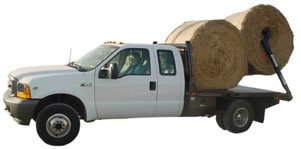OP
pmsmechanic
Elite Member
- Joined
- Dec 6, 2013
- Messages
- 4,208
- Location
- Southern Alberta, Canada
- Tractor
- 4410 and F-935 John Deere, MF 245
Only time I ever did fish plates was on dirt moving equipment. That was 1/2" and 3/4" thick material. I've read where guys say for truck frames don't go over 1/4" thick. If at all possible, I would fish plate both sides.
Shoot you just wreaked my plan. I had what I thought was a brilliant idea to just fish plate the outside as then the deck could stay on. Back to plan A.
Actually at first I was going to bolt a plate onto the outside of the frame to reinforce the frame but decided not to as then we wouldn't be able to easily see if the frame was cracking again. There is a reason for that. During feeding the deck and frame can get kind of sloppy with manure. I'd just as soon be able to check things without crawling under the truck.
